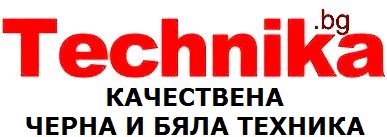This is an example page. It’s different from a blog post because it will stay in one place and will show up in your site navigation (in most themes). Most people start with an About page that introduces them to potential site visitors. It might say something like this:
Hi there! I’m a bike messenger by day, aspiring actor by night, and this is my blog. I live in Los Angeles, have a great dog named Jack, and I like piña coladas. (And gettin’ caught in the rain.)
…or something like this:
The XYZ Doohickey Company was founded in 1971, and has been providing quality doohickies to the public ever since. Located in Gotham City, XYZ employs over 2,000 people and does all kinds of awesome things for the Gotham community.
As a new WordPress user, you should go to your dashboard to delete this page and create new pages for your content. Have fun!
From Chapter 1: The Market at the Bottom of the Pyramid:
Turn on your television and you will see calls for money to help the world’s 4 billion poor people who live on far less than $2 a day. In fact, the cry is so constant and the need so chronic that the tendency for many people is to tune out these images as well as the message. Even those who do hear and heed the cry are limited in what they can accomplish. For more than 50 years, the World Bank, donor nations, various aid agencies, national governments, and, lately, civil society organizations have all fought the good fight, but have not eradicated poverty. The adoption of the Millennium Development Goals (MDG) by the United Nations only underscores that reality; as we enter the 21st century, poverty and the disenfranchisement that accompanies it remains one of the world’s most daunting problems.
The purpose of this book is to change that familiar image on TV. It is to illustrate that the typical pictures of poverty mask the fact that the very poor represent resilient entrepreneurs and value conscious consumers. What is needed is a better approach to help the poor, an approach that involves partnering with them to innovate and achieve sustainable win win scenarios where the poor are actively engaged and, at the same time, the companies providing products and services to them are profitable. This collaboration between the poor, civil society organizations, governments, and large firms can create the largest and fastest growing markets in the world. Large scale and wide spread entrepreneurship is at the heart of the solution to poverty. Such an approach exists and has, in several instances, gone well past the idea stage as private enterprises, both large and small, have begun to successfully build markets at the bottom of the pyramid (BOP) as a way of eradicating poverty.
More than 4 billion people live at the BOP on less than $2 per day. They are the subject matter of this book.
As you read on, you will discover companies fighting disease with educational campaigns and innovative products. There are organizations helping the handicapped walk and helping subsistence farmers check commodity prices and connect with the rest of the world. There are banks adapting to the financial needs of the poor, power companies reaching out to meet energy needs, and construction companies doing what they can to house the poor in affordable ways that allow for pride. There are chains of stores tailored to understand the needs of the poor and to make products available to them.
The strength of these innovative approaches, as you will come to appreciate, is that they tend to create cheap nfl jerseys opportunities for the poor by offering them choices and encouraging self esteem. Entrepreneurial solutions such as these place a minimal financial burden on the developing countries in which they occur.
To begin to understand how all of this is remotely possible, we need to start with some basic assumptions:
First, while cases certainly can be found of large firms and multinational corporations (MNCs) that may have undermined the efforts of the poor to build their livelihoods, the greatest harm they might have done to the poor is to ignore them altogether. The poor cannot participate in the benefits of globalization without an active engagement and without access to products and services that represent global quality standards. They need to be exposed to the range and variety of opportunities that inclusive globalization can provide. The poor represent a „latent market“ for goods and services. Active engagement of private enterprises at the BOP is a critical element in creating inclusive capitalism, as private sector competition for this market will foster attention to the poor as consumers. It will create choices for them. They do not have to depend only on what is available in their villages. If large firms approach this market with the BOP consumers’ interests at heart, it can also lead to significant growth and profits for them. These characteristics of a market economy, new to the BOP, can facilitate dramatic change at the BOP. Free and transparent private sector competition, unlike local village and shanty town monopolies controlled by local slum lords, can transform the „poor“ into consumers (as we illustrate with examples). Poverty alleviation will become a business development task shared among the large private sector firms and local BOP entrepreneurs.
Second, the BOP, as a market, provides a new growth opportunity for the private sector and a forum for innovations. Old and tired solutions cannot create markets at the BOP.
Third, BOP markets must become an integral part of the work of the private sector. They must become part of the firms’ core businesses; they cannot merely be relegated to the realm of corporate social responsibility (CSR) initiatives. Successfully creating BOP markets involves change in the functioning of MNCs as much as it changes the functioning of developing countries. BOP markets must become integral to the success of the firm in order to command senior management attention and sustained resource allocation.
There is significant untapped opportunity for value creation (for BOP consumers, shareholders, and employees) that is latent in the BOP market. These markets have remained „invisible“ for too long. It is natural for you to ask this: If all of this is so obvious, why has this not yet occurred?
All of us are prisoners of our own socialization. The lenses through which we perceive the world are colored by our own ideology, experiences, and established management practices. Each one of the groups that is focusing on poverty alleviation the World Bank, rich countries providing aid, charitable organizations, national governments, and the private sector is conditioned by its own dominant logic. Let us, for example, examine the dominant logic of each group as it approaches the task of eradicating poverty.
Consider, for instance, the politicians and bureaucrats in India, one of the largest countries with a significant portion of the world’s poor. India is home to more than 400 million people who qualify as being very poor. The wholesale nfl jerseys policies of the government for the first 45 years since independence from Great Britain in 1947 were based on a set of basic assumptions. Independent India started with a deep suspicion of the private sector. The country’s interaction with the East India Company and colonialism played a major part in creating this mindset. The experience with the indigenous private sector was not very positive, either. The private sector was deemed exploitative of the poor. This suspicion was coupled with an enormous confidence in the government machinery to do what is „right and moral.“ For example, the government of India initiated a series of large industrial projects in the public sector (owned by the Indian government) in a wide variety of industries, from steel to food distribution and global trading in essential commodities. India’s general suspicion of the private sector led to controls over its size and expansion.
Some sectors of economic activity were reserved for small scale industries. In textiles, for example, the „hand loom sector“ dominated by small firms was given preference. There was no credible voice in public policy for nurturing market based ecosystems that included the large and the small in a symbiotic relationship. The thinking was cleanly divided among the public sector (mostly large firms with significant capital outlay as in steel), the private sector with large firms strictly controlled by the government through a system of licenses, and a small scale sector. The focus of public policy was on distributive justice over wealth creation. Because of the disparities in wealth and the preponderance of the poor, the government thought its first priority must be policies that „equalized“ wealth distribution. Taxation, limits on salaries of top managers, and other such measures were instituted to ensure distributive justice. The discussion further polarized around the somewhat contrived concepts of rural poor and urban rich. The assumption was that the rural population was primarily poor and the urban population was relatively rich. However, the data increasingly does not support this distinction.
There are as many rural rich as there are urban poor. Poverty knows no such boundaries. In the developing world, more than one third of the urban population lives in shanty towns and slums. These traditional views reflect the philosophy behind actions taken by bureaucrats and politicians. During the last decade, a slow but discernable transition has been taking place from the traditional to a more market based outlook.
This much needed and desirable transition is in its infancy. The dominant logic, built over 45 years, is difficult to give up for individuals, political parties, and sections of the bureaucracy. This is the reason why politicians and bureaucrats appear to be vacillating in their positions. Most thinking people know where they have to go, but letting go of their beliefs and abandoning their „zones of comfort“ and familiarity are not easy. We also believe that it is equally difficult for a whole generation of BOP consumers to give up their dependence on governmental subsidies.
We have explicitly focused on ideology and policy and not on the quality of implementation of projects focused on the poor, be it building roads and dams or providing basic education and health care. The distinct role of corruption, which seems so endemic to developing countries in general, deserves separate treatment (see Chapter 5).
Private sector businesses, especially MNCs (and large local firms that emulate their MNC competitors), also suffer from a deeply etched dominant logic of their own, which restricts their ability to see a vibrant market opportunity at the BOP Although the dominant logic and its implications are clear, it is our goal in this book to challenge and provide counterpoints. For cheap nhl jerseys china example, BOP markets enable firms to challenge their perspectives on cost. We will show that a 10 to 200 times advantage (compared to the cost structures that are oriented to the top of the pyramid markets) is possible if firms innovate wholesale jerseys from china from the BOP up and do not follow the traditional practice of serving the BOP markets by making minor changes to the products created for the top of the pyramid.
Most charitable organizations also believe that the private sector is greedy and uncaring and that corporations cannot be trusted with the problems of poverty alleviation. From this perspective, profit motive and poverty alleviation do not mix easily or well. Aid agencies have come full circle in their own thinking. From aid focused on large infrastructure projects and public spending on education and health, they are also moving toward a belief that private sector involvement is a crucial ingredient to poverty alleviation.
Historically, governments, aid agencies, nongovernmental organizations (NGOs), large firms, and the organized (formal and legal as opposed to extralegal) business sector all seem to have reached an implicit agreement: Market based solutions cannot lead to poverty reduction and economic development. The dominant logic of each group restricts its ability to see the market opportunities at the BOP. The dominant logic of each group is different, but the conclusions are similar. During the last decade, each group has been searching for ways out of this self imposed intellectual trap. To eradicate poverty, we have to break this implicit compact through a BOP oriented involvement of the private sector.
We have to change our long held beliefs about the BOP our genetic code, if you will. The barrier that each group has to cross is different, but difficult nonetheless. However, once we cross the intellectual barrier, the opportunities become obvious. The BOP market also represents a major engine of growth and global trade, as we illustrate in our subsequent stories of MNCs and private firms from around the world.Articles Connexes:












.jpg)


























коментари